The COVID-19 pandemic revealed vulnerabilities in our global health system that many experts had warned about for years. As we move beyond the crisis, our focus shifts to pandemic preparedness—a proactive approach that emphasizes early detection, rapid response, and long-term resilience. This article outlines critical insights from emerging infectious diseases and shares practical strategies for strengthening health security on local, national, and global scales.
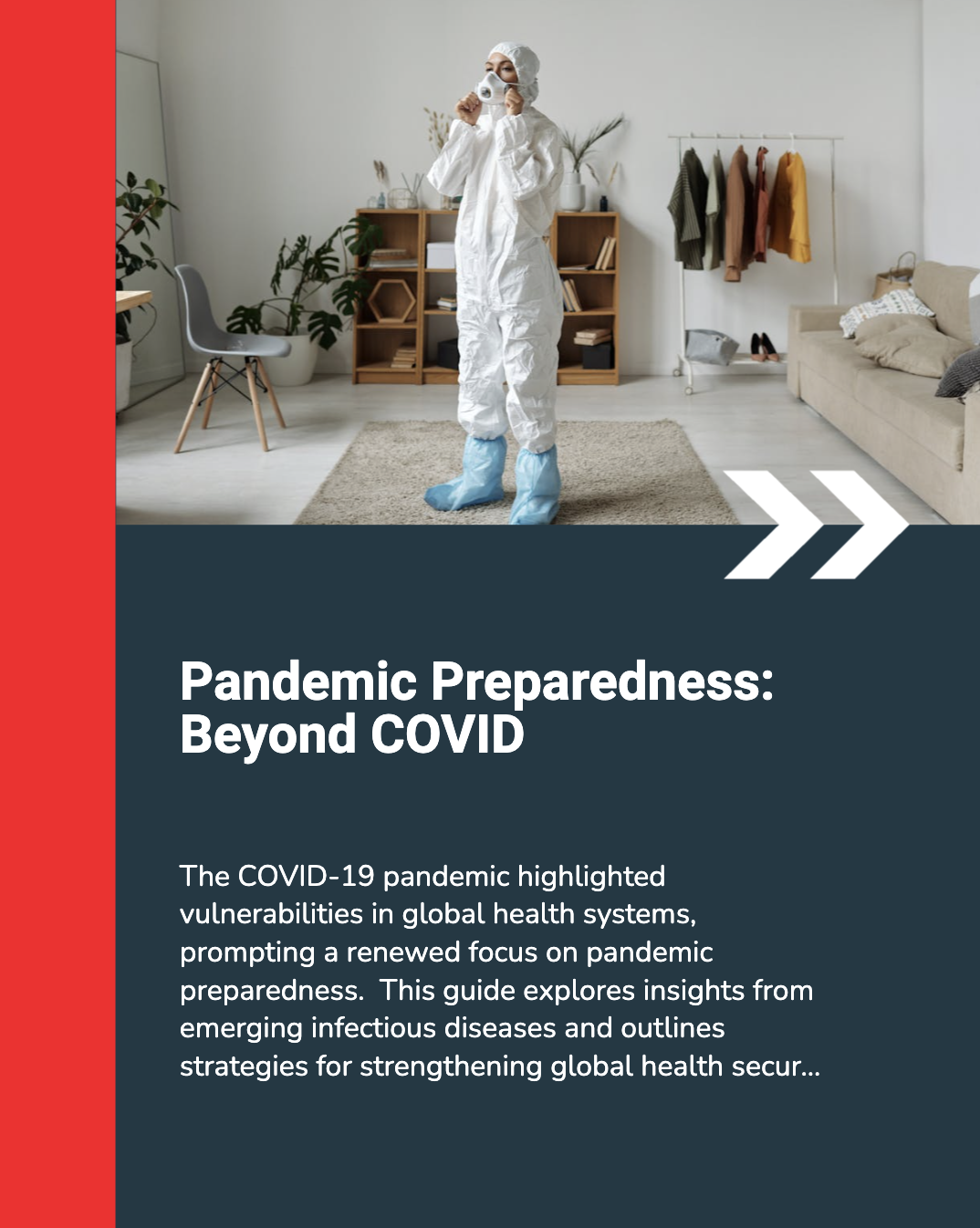
We are committed to sharing actionable knowledge that not only informs but also empowers communities and decision-makers. Let’s dive into the lessons learned, the evolving landscape of infectious diseases, and the innovative strategies that will shape the future of public health.
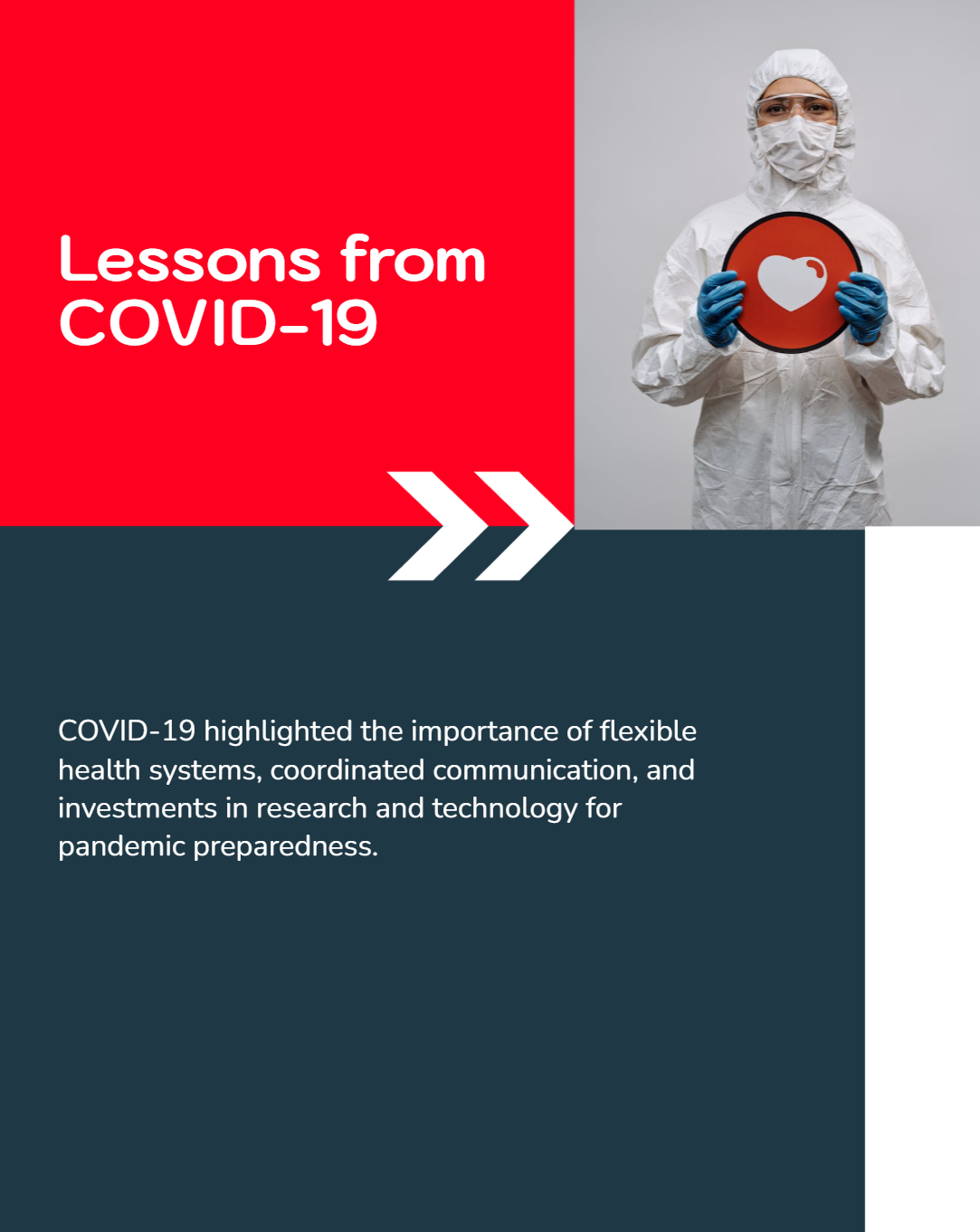
The Impact of COVID-19 on Global Health
The COVID-19 pandemic impacted every corner of the globe, affecting millions of lives and disrupting economies, travel, and social interactions. One of the most striking lessons was the necessity of having flexible and scalable health systems that can adapt quickly during crises. The pandemic underscored the value of preparedness in every community, regardless of size or wealth.
Key Takeaways for Future Preparedness
From rapid vaccine development to the deployment of telemedicine services, COVID-19 has taught us many lessons. One crucial takeaway is the importance of coordinated communication and collaboration among scientists, governments, and the public. Clear messaging and trust between these groups can significantly reduce misinformation and promote a unified response. Additionally, investments in research, technology, and community education have proven essential in managing outbreaks efficiently.
What Are Emerging Infectious Diseases?
Emerging infectious diseases are illnesses caused by pathogens that are newly identified or have recently increased in incidence or geographic range. They may result from environmental changes, human behaviors, or microbial adaptation. These diseases remind us that pathogens can evolve, and our readiness to adapt is key to effective control and prevention.
Recent Examples and Trends
Recent years have seen outbreaks of diseases such as Ebola, Zika, and various coronaviruses. Each of these diseases carries unique challenges in terms of transmission and control, yet they share common elements such as the need for robust surveillance systems and early intervention strategies. Understanding these trends helps us to design policies that are both proactive and reactive, ensuring that health systems are equipped to handle the unexpected.
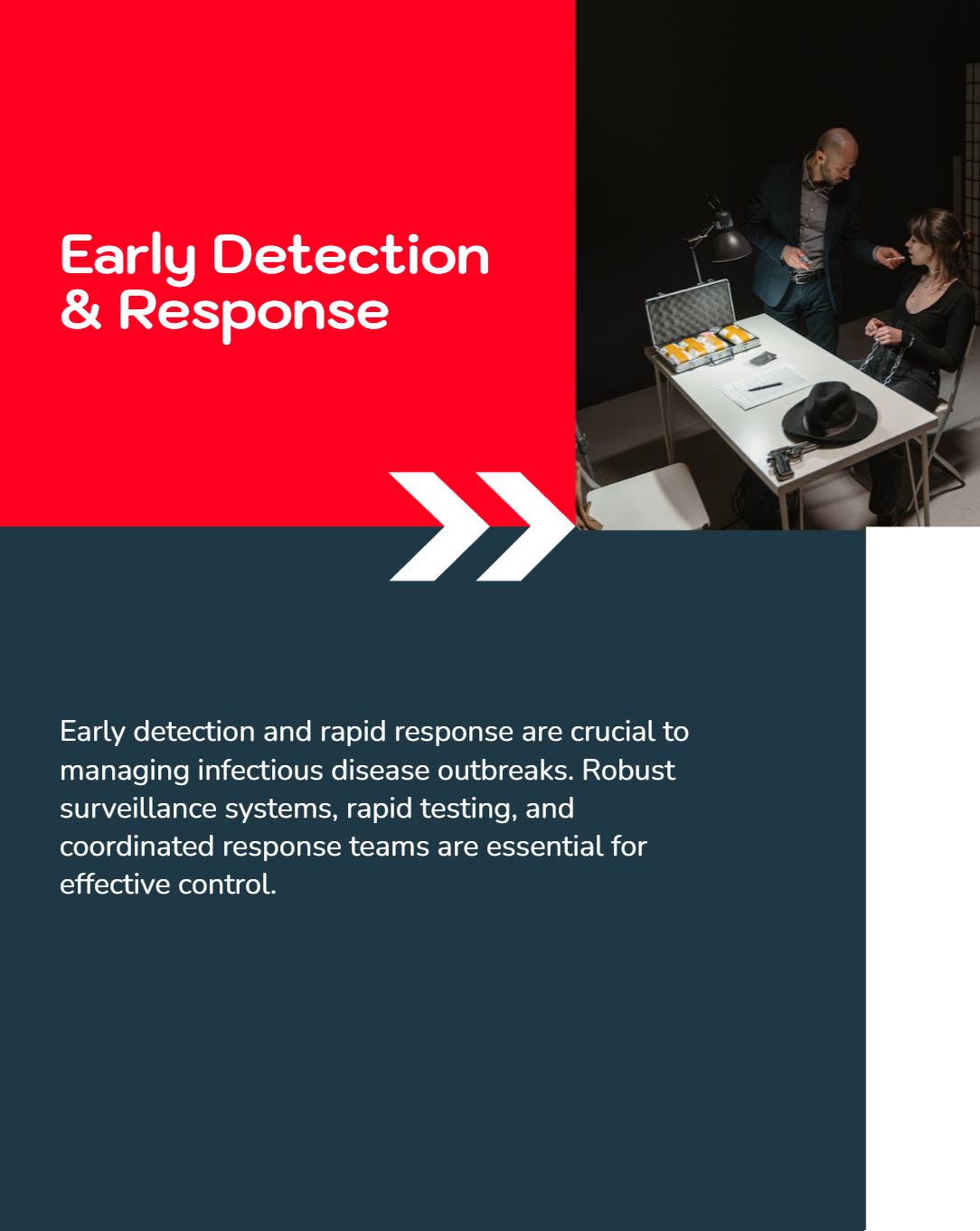
Surveillance Systems
Early detection is the cornerstone of effective pandemic preparedness. Robust surveillance systems enable health authorities to monitor outbreaks in real time. By tracking disease patterns, governments can quickly identify potential threats and implement containment measures before an outbreak escalates. This includes global networks that share data across borders and local systems that detect anomalies in health trends.
Rapid Testing and Diagnostics
Testing and diagnostics are critical in the early stages of an outbreak. Rapid testing not only confirms cases but also helps in isolating affected individuals to prevent further spread. Investment in advanced diagnostic tools has accelerated during the COVID-19 pandemic, providing a blueprint for future preparedness. {insert image here + diagram of testing workflow}
Coordinated Response Teams
The integration of rapid detection systems with coordinated response teams ensures that once an outbreak is identified, resources can be mobilized immediately. These teams are comprised of healthcare professionals, epidemiologists, and support staff who work together to control and mitigate the spread of the disease.
Strengthening Healthcare Infrastructure
A strong healthcare infrastructure is vital to managing public health emergencies. Investments in hospital facilities, medical equipment, and trained personnel form the backbone of a resilient health system. The COVID-19 pandemic highlighted the critical need for surge capacity in hospitals, as well as reliable supply chains for essential medicines and personal protective equipment (PPE).
Ensuring Supply Chain Resilience
The pandemic disrupted global supply chains, exposing weaknesses in the delivery of medical supplies. To build a more resilient system, we must develop strategies that ensure the continuity of essential goods during emergencies. This involves creating local stockpiles, diversifying suppliers, and fostering partnerships between the public and private sectors.
Table: Comparison of Emerging Infectious Diseases
| DISEAS | TRANSMISSION | FATALITY RATE | PREPAREDNESS LESSON |
|---|---|---|---|
| COVID-19 | Airborne, droplets | Moderate | Rapid vaccine development, global cooperation |
| Ebola | Direct contact | High | Importance of protective equipment, isolation |
| Zika | Mosquito-borne | Low | Vector control, public education |
| SARS | Airborne droplets | Moderate | Early detection, hospital preparedness |
| MERS | Close contact | High | Surveillance in high-risk environments |
This table illustrates the diversity of emerging infectious diseases and emphasizes the varied strategies required for effective pandemic preparedness.
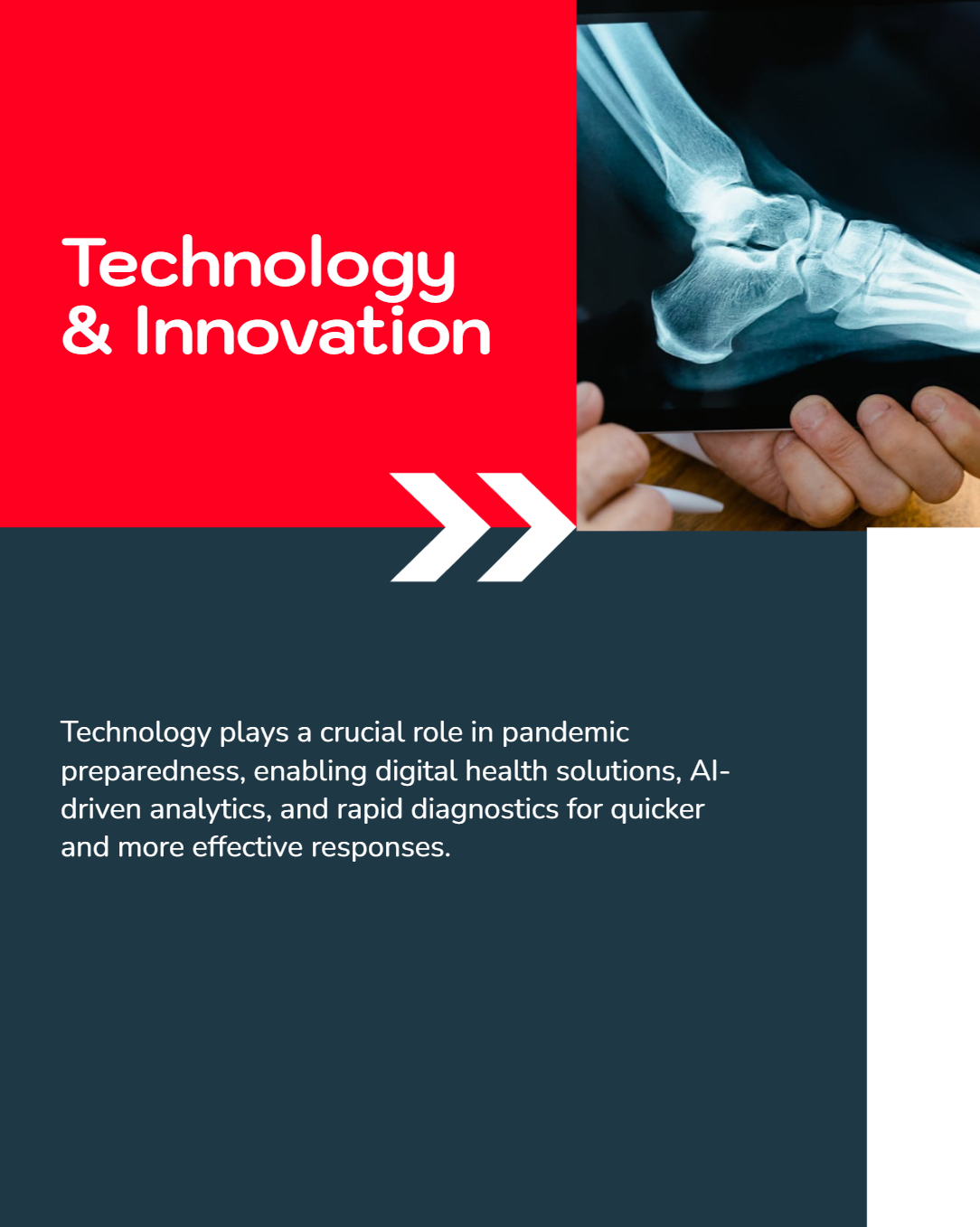
Digital Health Solutions
Technology has been a game changer in the field of public health. Digital health solutions, such as mobile health apps and telemedicine platforms, have allowed us to maintain access to care even during lockdowns and social distancing measures. These tools not only support patient care but also facilitate data collection for epidemiological studies.
AI and Data Analytics
Artificial intelligence (AI) and data analytics are transforming how we predict and respond to disease outbreaks. Advanced algorithms analyze vast amounts of data to identify trends, predict outbreak hotspots, and optimize resource allocation. This proactive approach helps in making informed decisions that can save lives during critical moments.
Real-World Applications
Real-world applications of AI in public health include contact tracing, outbreak forecasting, and personalized medicine. These technologies enable health professionals to act swiftly and effectively, reducing the overall impact of infectious diseases on society.
International Health Regulations
Global health is a shared responsibility. International health regulations provide a framework for countries to collaborate on preventing and responding to pandemics. By adhering to these regulations, nations can share vital information, coordinate responses, and provide mutual support during health emergencies.
The Role of Global Institutions
Organizations like the World Health Organization (WHO) play a crucial role in fostering international cooperation. Their guidelines and recommendations help shape national policies and ensure that even the most vulnerable countries have access to the resources needed for pandemic preparedness.
Policy Frameworks for Pandemic Preparedness
Strong policy frameworks are essential for effective pandemic management. These policies should cover aspects such as funding for research, emergency response protocols, and public communication strategies. A well-coordinated policy response not only mitigates the spread of disease but also builds trust among the public.
The Role of Education in Preparedness
Community education is a fundamental element in preparing for and managing pandemics. Public awareness campaigns that promote hygiene, vaccination, and safe practices can significantly reduce the spread of infectious diseases. When communities are well-informed, they are more likely to cooperate with public health measures.
Encouraging Community-Based Initiatives
Local communities are the first line of defense against infectious diseases. Grassroots initiatives, such as community health workshops and neighborhood response teams, empower individuals to take charge of their own health. This bottom-up approach ensures that preparedness measures are tailored to the unique needs of each community.
Building Trust Through Transparency
Transparency in communication builds trust between the public and health authorities. By sharing clear and accurate information, authorities can dispel myths, reduce panic, and encourage responsible behavior. This trust is essential for the smooth implementation of public health strategies during a crisis.
Research and Development
Continuous research and development (R&D) are critical for staying ahead of emerging infectious diseases. Investment in R&D helps to innovate new vaccines, treatments, and diagnostic tools. By understanding the behavior of pathogens, we can develop strategies that preemptively address potential outbreaks.
Investment in Public Health Infrastructure
Sustainable investments in public health infrastructure lay the groundwork for long-term resilience. This includes upgrading facilities, training healthcare workers, and ensuring that communities have access to necessary medical resources. A strong infrastructure not only prepares us for future pandemics but also improves overall health outcomes.
Sustainable Strategies for Long-Term Resilience
Long-term strategies for pandemic preparedness must be sustainable and adaptable. This involves integrating lessons learned from past outbreaks into everyday practices, continuously updating emergency response plans, and fostering a culture of resilience. Sustainability also means addressing broader issues such as climate change and urbanization, which can influence the spread of infectious diseases.
Collaborative Innovation
Innovation is most effective when it is collaborative. By bringing together experts from various fields—including healthcare, technology, and policy—societies can develop creative solutions to complex health challenges. These collaborations often lead to breakthroughs that redefine how we approach pandemic preparedness and global health security.
Chart: Future Strategies for Pandemic Preparedness
| STRATEGY | KEY COMPONENTS | EXPECTED OUTCOMES |
|---|---|---|
| Research and Development | Vaccine innovation, diagnostics, therapeutics | Faster, more effective responses |
| Public Health Infrastructure | Hospital upgrades, workforce training | Improved healthcare delivery |
| Digital Health Integration | Telemedicine, AI-driven analytics | Enhanced monitoring and response systems |
| Community Engagement | Public education, local initiatives | Increased trust and proactive participation |
| Global Collaboration | International regulations, policy alignment | Unified response to global health threats |
This chart highlights the main pillars of future strategies and reinforces the need for a well-rounded approach to pandemic preparedness.
Government and Policy Leadership
Effective leadership at the governmental level is essential for driving the policies and investments needed to prepare for future pandemics. Leaders who prioritize health security can mobilize resources, coordinate inter-agency efforts, and foster international partnerships. Their role extends beyond crisis management to long-term planning and resilience building.
Corporate and Private Sector Leadership
In addition to governmental efforts, the private sector plays a pivotal role in innovation and supply chain management. Companies that invest in research, adopt digital health solutions, and maintain agile operations contribute significantly to a nation’s overall readiness. Collaboration between public and private entities can bridge resource gaps and expedite the development of critical solutions.
Local Community Leaders
Local community leaders, including educators, religious heads, and neighborhood organizers, are instrumental in implementing public health strategies on the ground. Their deep understanding of local needs helps tailor interventions that are culturally appropriate and effective. By working together, community leaders and health officials can ensure that preparedness plans reach every level of society.
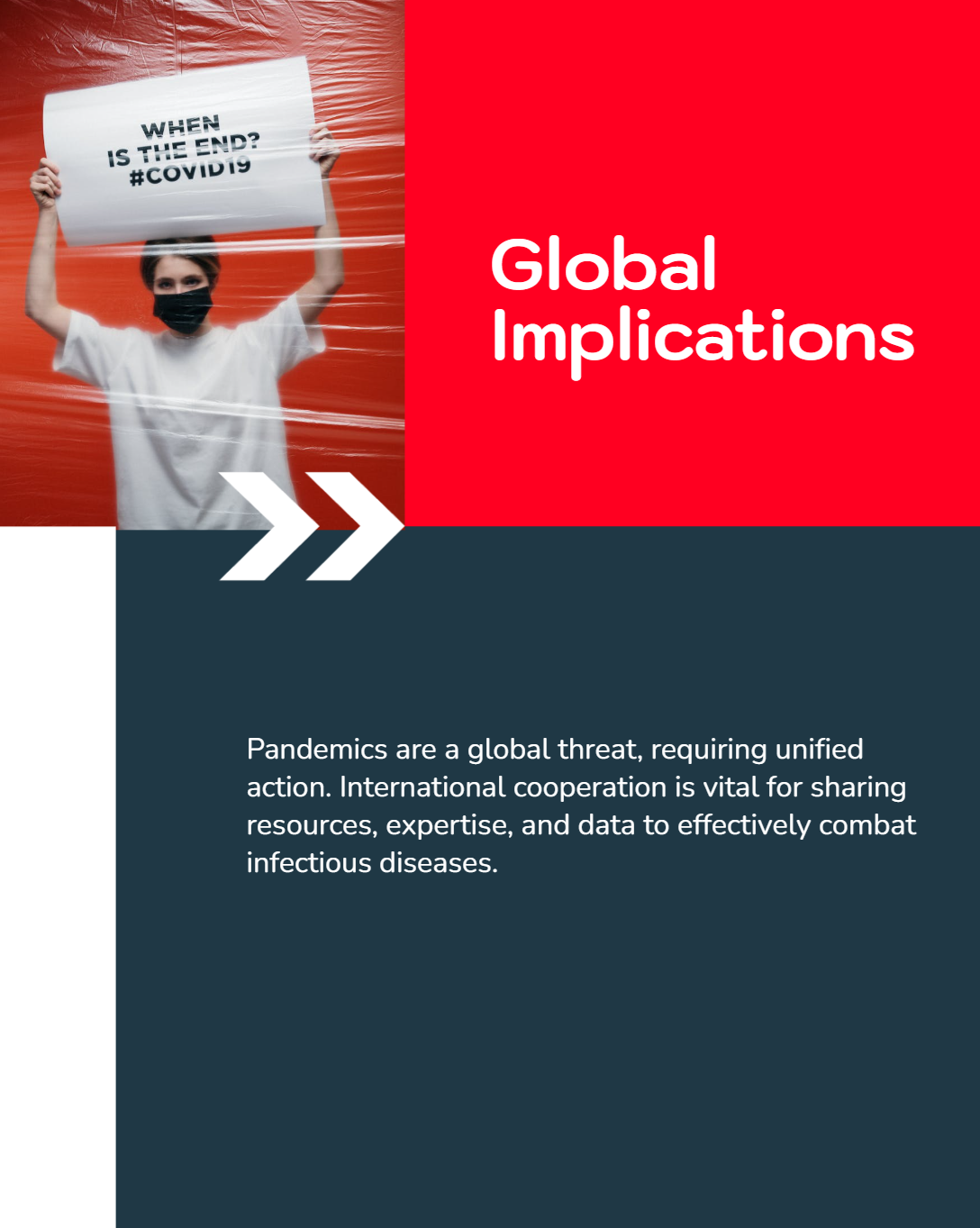
A Shared Global Responsibility
Pandemics do not respect borders. A localized outbreak can quickly evolve into a global crisis without coordinated action. Our interconnected world demands a unified approach where nations share resources, expertise, and data to combat infectious diseases collectively. Pandemic preparedness is not just a national priority—it is a global imperative.
Strengthening International Ties
Strengthening international ties through mutual support agreements, shared research endeavors, and cross-border communication is essential. Such cooperation can accelerate vaccine distribution, improve resource allocation, and enhance the overall effectiveness of response measures during a crisis.
Adapting to a Changing World
The world is changing rapidly, and so are the challenges we face in public health. Factors such as climate change, increased urbanization, and global travel create new opportunities for pathogens to spread. Adapting our strategies to these dynamic conditions is crucial. By anticipating these changes, we can stay one step ahead and protect our communities more effectively.
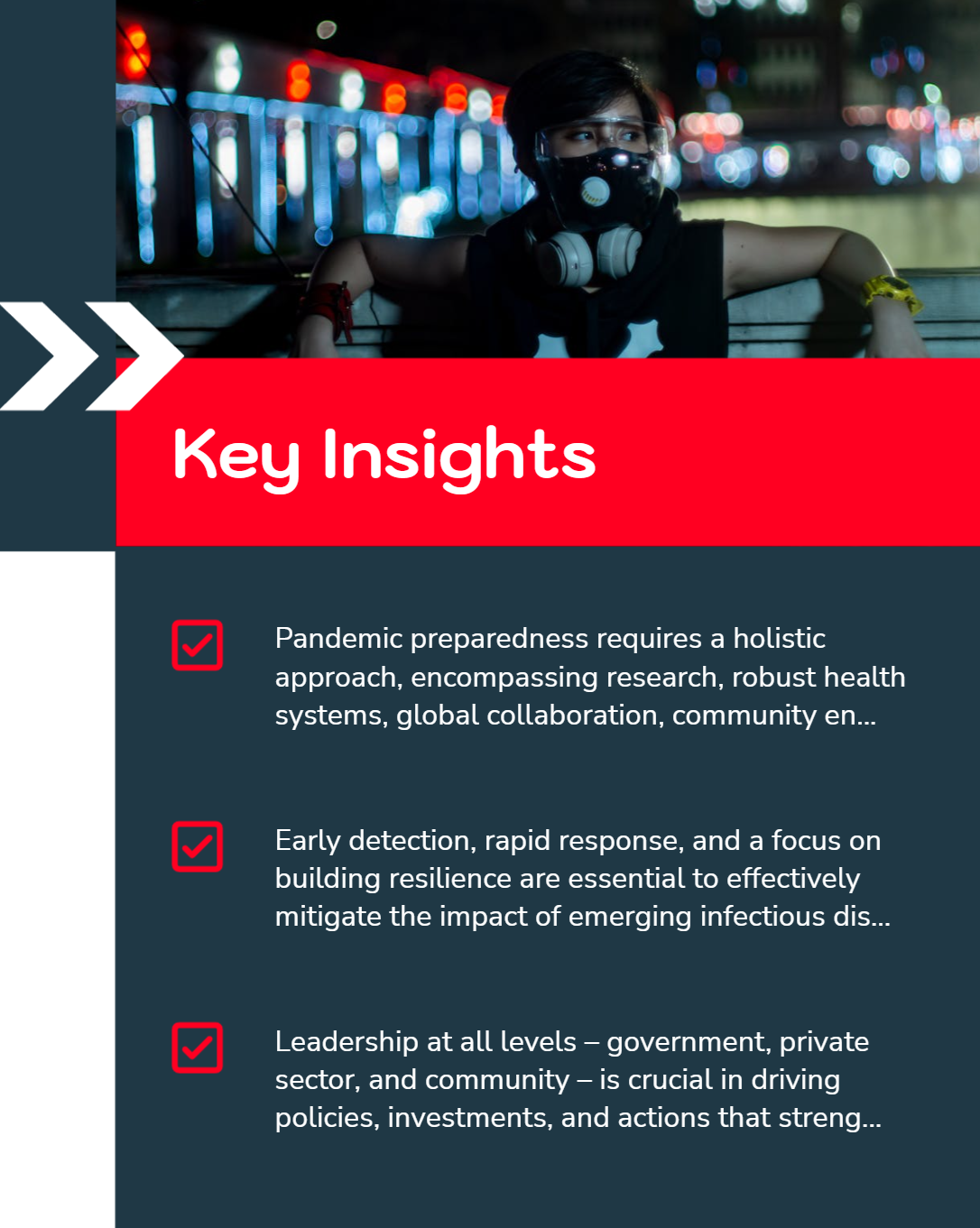
The journey beyond COVID-19 demands a reinvigorated approach to pandemic preparedness. By embracing lessons learned from recent outbreaks and leveraging modern technology, robust health systems, and global cooperation, we can build a resilient future. Our commitment to continuous improvement and community engagement is key to mitigating the impact of emerging infectious diseases. We stand together, informed and prepared, ready to meet the challenges of tomorrow with innovation, collaboration, and unwavering determination.
Pandemic preparedness involves the planning, coordination, and implementation of strategies to prevent, detect, and respond to infectious disease outbreaks. It includes early detection systems, robust healthcare infrastructure, and public education initiatives that together help manage and mitigate the impact of pandemics.
COVID-19 has taught us the importance of rapid response, international collaboration, and the need to invest in digital health and surveillance technologies. The lessons learned from the pandemic have reshaped global health policies and spurred innovations in medical research and public health infrastructure.
Early detection allows for swift action to contain the spread of disease. It enables health authorities to isolate cases, deploy rapid testing, and begin treatment early, which can reduce the severity of outbreaks and save lives.
Technology is central to modern pandemic preparedness. Digital health solutions, AI, and data analytics help predict outbreak patterns, facilitate rapid diagnostics, and optimize resource allocation. These innovations make it possible to respond faster and more effectively during health emergencies.
Communities play a vital role through education, local initiatives, and active participation in public health measures. By staying informed and following guidelines, individuals contribute to a collective effort that strengthens overall pandemic preparedness and protects public health.
 03.03.2025
03.03.2025